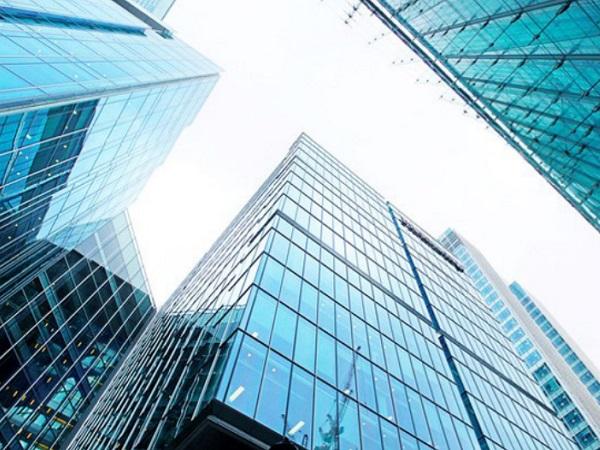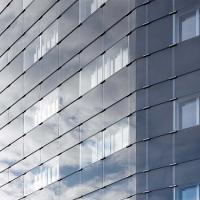This article was originally published in IGS Magazine’s Spring Edition 2022 focused on “Decarbonising the Glass Industry”
This is only possible thanks to Dow’s backward integration and continuous efforts to significantly reduce the silicon metal footprint. Dow offsets the remainder by its own generated offsets from within its supply chain. Carbon neutrality certificates can be requested on a project by project basis as Dow offered service. It is important to note that these carbon-neutral silicones do not only contribute to a sustainable construction design through their sourcing and production, but also through their use, contributing to more material and energy efficiency as well as circularity at end of life of a façade.
Carbon neutrality shall respect Environmental, Social and Governance aspects
The biggest contribution to the embodied carbon of silicones resides in the raw material extraction and processing. Thanks to backintegration in its production process, Dow produces silicon metal with low carbon raw materials and renewable, non-fossil-fuel energy at our two sizeable, protected rainforest locations. Raw materials are sourced and obtained locally. Dow utilizes quartz mines, waste from the wood industry and the Dow owned eucalyptus plantations. The production process is supplied largely with hydroelectric power. This allows to significantly reduce the silicon metal’s manufacturing footprint which dominates the overall emissions balance of a silicone production.
To reach virtually complete carbon neutrality, Dow is using its own carbon offsets from the internal value chain, resulting from ESG investments. This is obtained not only from the above mentioned environmental investments, but also by making critical financial, educational and social investments in the local communities. Improving the area’s Human Development Index and discouraging further destruction of the Amazon rainforest are key initiatives. Dow is making a positive impact on the environment and local communities with Project Ybá in the Amazon, which brings work to circa 4000 people living near the site, while producing the low-carbon materials needed for developing the first-ever carbon-neutral silicone sealants for high performance building façades.
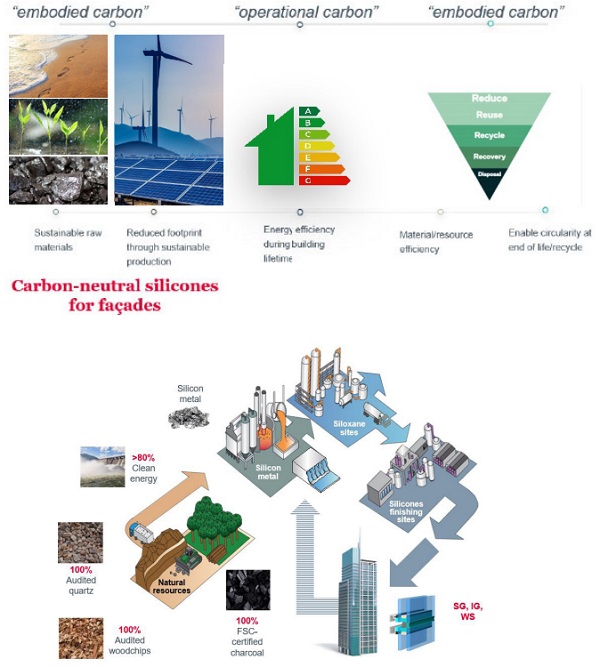
Credible Carbon-Neutrality Services for Façades
Life Cycle Analysis (LCAs) following ISO 14040:2006 and ISO 14044:2006 have been prepared for individual products and the resulting low CO2 emissions are offset as explained before. The LCA conformance review statements and Qualifying Explanatory Statements (QES) were externally (third party) audited following ISO standards mentioned above and PAS 2060 requirements respectively. The PAS 2060 Verified Carbon Neutrality standard, published by the British Standards Institution in 2010, is the most well-known and established standard for organizational carbon-neutrality.
It provides a guidance on how to create a continuous carbon reduction plan and offset greenhouse gas (GHG) emissions using verified credits, which emphasizes and requires the support of climate finance projects with the aim of adding social and environmental value such as Dow’s project Ybá. Annual audits contribute to continuous progress in the journey of reducing and offsetting emissions. As part of the carbon neutrality service, the QES, containing the carbon neutrality achievement declaration, can be requested per project. In parallel, the audited LCA results are reported in Environmental Product Declarations (EPDs).
Dow’s carbon-neutral service also includes guidance on the contribution of carbon-neutral silicones to securing green building certification credits/points. The carbon neutrality of structural glazing (SSG), secondary sealing (IG) and weathersealing (WS) silicone sealants can contribute to achieving credits from the innovation section of the main green building ratings scheme in place, such as the internationally recognized BREEAM and LEED, and the Singapore Building and Construction Authority Green Mark (mainly recognized in APAC and China) or the German Sustainable Building Council (DGNB) scheme (mainly used in central Europe).
Dow’s carbon-neutrality services are available for projects involving structural glazing, insulating glazing and weather sealing, covering all geographical areas. This service is available for the following high performance silicones:
- DOWSIL™ 791 and DOWSIL™ 795 Weatherproofing sealants
- DOWSIL™ 3362, 3362N, 3363EU, 3363CN, 3363US Insulating Glass Sealant
- DOWSIL™ 993, 993N and 983 Structural Glazing Sealants
Gaining access to Dow’s carbon-neutral silicones is straightforward. Project specific volumes to be consumed need to be disclosed together with project information and submitted to Dow. Please consult dow.com/ carbonneutralsilicones for more information.

Supporting sustainable façade design
Material efficiency is an important aspect of a sustainable design. This approach focuses in the first place on building clever through preventing or reducing material usage which can help to further decrease the embodied carbon of a building envelope. To evaluate how SSG, with or without carbon neutral silicones, can prevent or reduce material resources, several state-of-the-art commercially available SSG and captive façade systems were compared from a structural and raw material usage. To compare material use, a simple aluminium weight calculation was performed.
At equal capacity in structural loading [1], the capped system was found to require up to 15% more aluminium. This is mainly due to the presence of the cap, but additional material savings and consistent lightweight construction can be obtained by optimizing the bonding composite effect, which transfers the glass rigidity to the frame. This concept has been successfully implemented in bonded PVC window frames, which can use less steel reinforcements (only for larger loads or dimensions) compared to a nonbonded window [2] and is investigated to develop façade systems using less stiff frame materials than aluminium (e.g. fibre reinforced pultrusions [3]).
Recognizing this benefit of bonding, the European curtain wall standard EN13830 [4] gives the possibility to work with lower profile stiffness provided the stiffening effect of the bonded façade elements is proven in the application through advanced calculation methods (e.g. finite element analysis). In the above material usage considerations, only the aluminium reduction in SSG systems was quantified based on the profile cross section comparison. However, for a full comparison of raw material usage, the quantity of EPDM gasket used should be assessed as well. The service life of the EPDM gaskets for the captive systems is assumed to be about 16.7 years [5]. Gasket replacement may therefore be required during lifetime of a captive façade decreasing its material efficiency.
On the other hand the lifetime of an SSG system is assumed to be 50 years, which also corresponds to the service life of a building. The application of silicone sealants, with outstanding performance features when it comes to climatic resistance and weatherability, can enhance the long-term resistance to degradation of buildings and can protect and extend a buildings lifetime [6]. Silicone sealants used for weatherproofing or bonding help to ensure airtightness and energy efficiency of the building envelope, as well as the use of energy saving multi-pane insulating glass units.
Furthermore, as gaskets in dry glazed façade systems age over lifetime, air infiltration can increase more than is the case for the durable silicone wet sealed façades resulting in higher energy consumptions and consequently higher operational CO2 [7, 8, 9] for captive façades. Besides the use of silicone weatherproofing, the use of an SSG façade system can also contribute to the thermal performance of the building envelope.
Thermal modeling of various systems [7, 8, 10] indicates that SSG curtain walls can reach, depending on the system and configuration, between 10 and 25% improved thermal performance. The results presented are of indicative nature, aiming to highlight that SSG systems can be designed to achieve design intent and energy efficiency, while optimizing material efficiency. A wide variety of façade systems are however available on the market and savings may differ from the hereby presented study. More details are available upon request.
The final aspect considered in sustainable design concerns end of life consideration and ensuring reuse and recycle can happen. Due to their small weight, silicone sealants are typically not the primary target of recycling of the façade. Instead the façade industry is assessing how bonded units can be dismantled and their high value components, such as glass or metal, reused. Silicone sealants should not prevent this step. At first sight, there might seem to be a contradiction between the durability of silicone bonded assemblies and the need for disassembly for repair or at end of life.
But silicone bonding has specific advantages compared to other adhesives to enable maintenance, reuse and recycling. As opposed to more rigid bonding solutions (eg PU) silicones offer a good potential for disassembly at end of life [11]. The method developed for the dismantling of bonded glazing can further benefit from over 50 years of expertise in façade inspection, deglazing and repair exercises. Should a reuse of glass or frame not be desired then the silicone can be mechanically removed from the disassembled substrates.
To close the loop of the lifecycle of a silicone in a façade, Dow is preparing to recycle the silicones reclaimed from the bonding and secondary sealing of the IGU. Several options to reintegrate these silicones into the production line process are currently being evaluated. This process will save raw material usage and also avoid the high energy required for the initial transformation of silica into silicone metal. Similar to other manufacturers, these studies will most probably lead to the development of quality criteria requirements to allow injecting recycled silicone in the production. It is indeed crucial to ensure the origin and composition of the waste silicone.
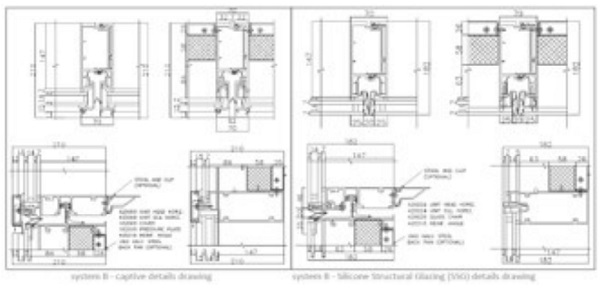
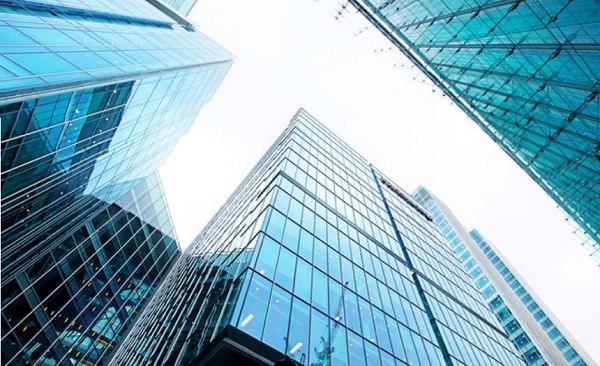
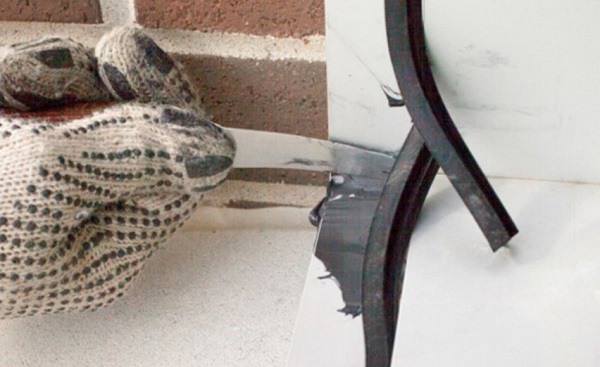
Build tomorrow with carbonneutrality and Dow Building Science
Dow’s investment into low carbon silicon metal manufacture, which embraces the advantages of backward integration, is just one example of our commitment to environmental, social and governance. Our industry-first carbon-neutral silicones service represents an important step toward the reducing the carbon footprint of buildings. Verified by annual audits, this service provides Dow certification by project which includes external environmental product declarations for each product, underpinned by the 50+ years of successful performance of our structural glazing silicones.
Dow’s dedicated project support team, work in close collaboration with architects and consultants on a global basis, to offer support for engineering, design and sustainability. Please contact us to learn more about Dow’s carbon-neutrality services, documentation and project support tools:
- Life Cycle Analyses (LCAs)
- Third party verified ISO 14040:2006 and ISO 14044:2006 LCA conformance review statements
- PAS 2060 Carbon Neutrality – QES documents with details
- EPDs
- Contribution of carbon neutral silicones to securing green building certification credits/points
- Product specifications for use in submittals
- Digital project management tools with integrated carbon-neutrality services on specific projects
Our innovative and performance-enhancing product technology showcase for sustainable and modern building design is available 24/7 at dow.com/buildingscienceconnect and documentation for project submittals may be downloaded at dow.com/submittalsemea. For further information, please visit dow.com/carbonneutralsilicones.
***
This article was originally published in IGS Magazine’s Spring Edition 2022 focused on “Decarbonising the Glass Industry”
***
Literature
1. Meinhardt Façade Technology, Curtain Wall Calculation of captive & SSG system report, 22 February 2022
2. Wolf A.T., Stiell J., Plettau M., Structural Bonded (Adhered) Window Systems, Conference Paper
3. Pascual C., Montali J., Overend M., Adhesivelybonded GFRP-glass sandwich components for structurally efficient glazing applications, Composite Structures, Volume 160, 15 January 2017, Pages 560-573
4. EN 13830:2015+A1:2020, Curtain WallingProduct standard
5. Global Silicones Council, Silicon-Chemistry Carbon Balance, An assessment of Greenhouse Gas Emissions and Reductions, https://www.silicones.eu/wp-content/uploads/2019/05/SIL_exec-summary_en.pdf, accessed 25/2/2022
6. Wolf A.T., Recknagel C., Wenzel N., Sitte S, Structural Silicone Glazing: Life Expectancy of more than 50 Years ?, in Proceedings of Glass Performance Days (2017)
7. Carbary L.D., Albert F., A Thermal Modeling Comparison of Typical Curtainwall Glazing Systems, in Proceedings of Glass Performance Days (2007)
8. Carbary L.D., Hayez V., Wolf A.T, Bhandari M., Comparisons of Thermal Performance and Energy Consumption of Facades Used in Commercial Buildings, Proceedings of Glass Performance Days (2009)
9. www.feica.eu accessed 25/2/2022
10. Bauwerk, Thermal modeling Report reference dowcorning_211101_02b_en, 2022
11. Personal communication to the authors by Prof. Mauro Overend, TU Delft
Acknowledgement
The authors wish to thank Meinhardt Façade Technology Singapore for the fruitful discussions on structural calculations
Disclaimer
NOTICE: No freedom from infringement of any patent owned by Dow or others is to be inferred. Because use conditions and applicable laws may differ from one location to another and may change with time, Customer is responsible for determining whether products and the information in this document are appropriate for Customer's use and for ensuring that Customer's workplace and disposal practices are in compliance with applicable laws and other government enactments. The product shown in this literature may not be available for sale and/ or available in all geographies where Dow is represented. The claims made may not have been approved for use in all countries. Dow assumes no obligation or liability for the information in this document. References to “Dow” or the “Company” mean the Dow legal entity selling the products to Customer unless otherwise expressly noted. NO WARRANTIES ARE GIVEN; ALL IMPLIED WARRANTIES OF MERCHANTABILITY OR FITNESS FOR A PARTICULAR PURPOSE ARE EXPRESSLY EXCLUDED.

